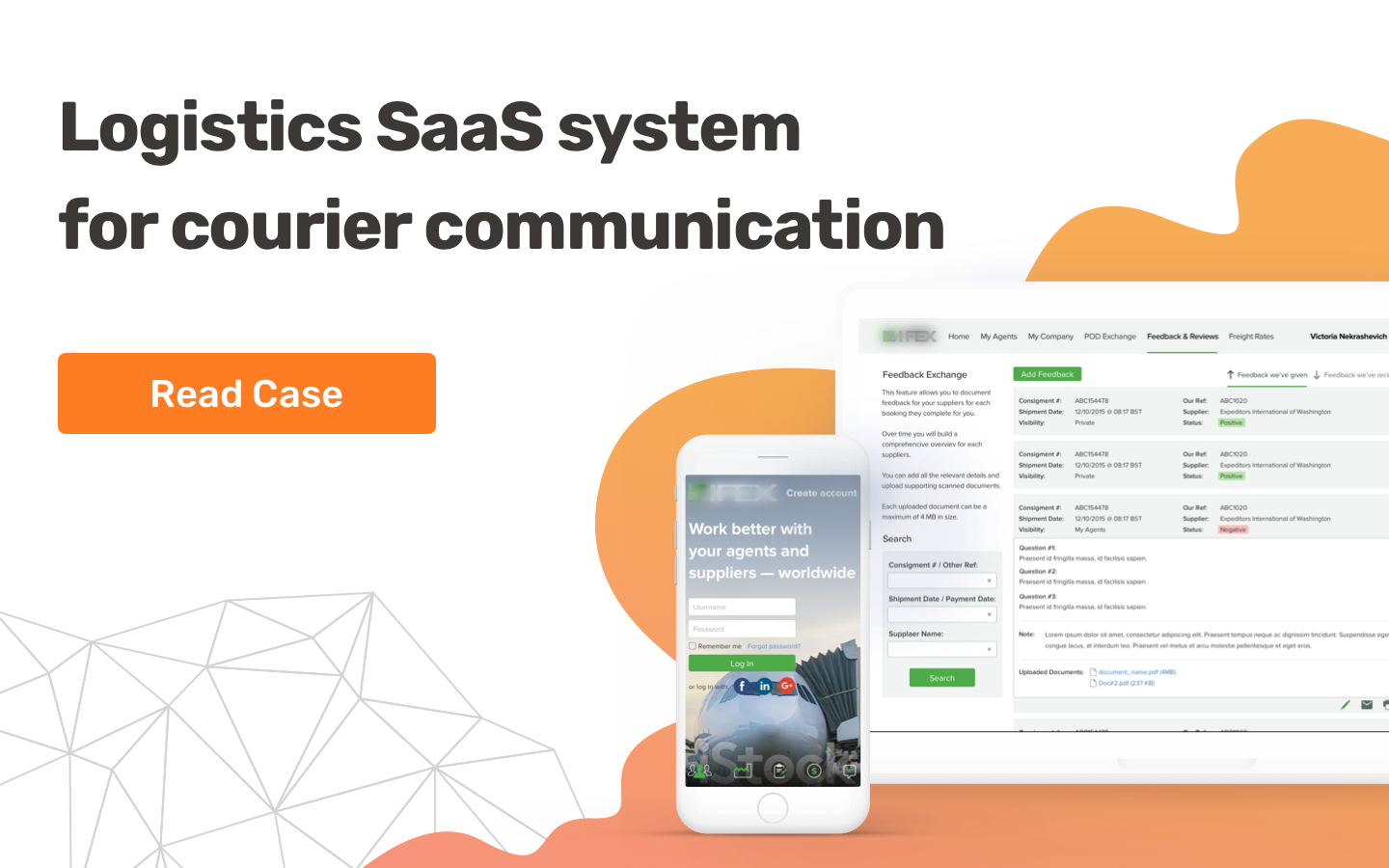Shipping API Integrations: Essential Guide
The world of logistics and e-commerce is constantly changing. New technologies create completely unexpected opportunities for business owners, simplify cumbersome manual processes, and speed up staff work.
Today, customers can track order execution and delivery in real-time, change delivery data from smartphones, etc. And all this is possible since courier companies use state-of-the-art software and tools such as Shipping API.
In this article, we’ll try to understand what Shipping API is, what functions it performs, and the rules for integrating such systems. We’ll also talk about the best providers in this field, their features and special offers.
What Is Shipping API?
API, i.e., an application programming interface, performs two main functions: transferring information between two different applications and displaying it to users. It builds a connection between various digital solutions for continuous communication. This tool simplifies the programming process and provides developers with the necessary actions.
The Shipping API, in turn, is a programming interface for specific applications in e-commerce and related areas. Shipping API integration serves to connect the company with customers, contractors, or shippers.

What to Look For in a Shipping API?
Shipping API functionality may vary depending on the user's needs and what the shipping service offers. First of all, it simplifies app usage because the API provides you with a simple interface that helps better manage your business and focus on essential points.
Also, this tool should help to automate the checkout process and implement the delivery option directly into the business model. This, in turn, provides safe and reliable shipping.
Address Verification and Validation
This option is significant as it allows you to quickly check the address entered by the customer and identify possible delivery problems. Thus, you can check that the data entered is complete and valid and inform the user about the error. An additional advantage is filtering commercial and residential addresses to determine the correct delivery cost.
Why is this important?
Timely address verification allows you to get rid of problems related to surcharges for correcting addresses, unsuccessful deliveries, updating transport documents, delays in order fulfillment, etc. In this way, it creates the proper target audience perception of your business and significantly improves the user experience. Not to mention reducing unnecessary costs for rescheduling or new labeling.
Labeling
Shipping API delivers shipment data from the store to create a label endpoint and then to the carrier. This process should be fast and smooth.
Why is this important?
Proper labeling is proper delivery. The Good Shipping API allows you to download labels and print them at any time, as well as save shipment data.
Shipment Tracking
With the help of Shipping API, you can send up-to-date information about a client’s order via email, personal account on the website, mobile app, etc. It's best to choose a real-time tracking option.
Why is this important?
Transparency and active communication with the client are essential components of the user experience. The more information your customer has about the order, the less workload for the contact center and the more trust in your business.
Multiple Choice
It is good practice to integrate with different carriers, so the Shipping API should support this feature.
Why is this important?
Different companies offer various delivery terms and prices, so it’s essential to allow the customer to choose the most convenient option. This way, users will know that you care about them and offer different options for their personal convenience.
Top 7 Best Shipping API
Shipping APIs can differ greatly. Some were explicitly created for shipping companies; others were sharpened for e-commerce. There are some of the most popular and convenient options among this huge selection. Let's talk about them.
FedEx APIs
FedEx is an American company that, in 50 years, has grown into a multinational corporation with a huge number of planes and global reach.
Integration
For FedEx Shipping API integration, developers use the GENCO supply chain, which contains a list of open APIs for accessing the platform. Implementation occurs as a REST API, supports the OAuth 2.0 authentication protocol, HTTP protocol, and JSON (JavaScript Object Notation) data format for requests and responses.
The company has created a special Developer Resource Center, where you can find all the necessary documentation, FAQs, and tips on connection and configuration. Developers can integrate API into websites, apps or business management systems.
Features
Key features include real-time shipment tracking, label creation, reporting, pricing, inventory, etc. The service also provides all the necessary tools to manage shipments (creation, updating, returning, etc.).

DHL APIs
DHL is a German-based international courier and express-delivery service with global coverage.
Integration
DHL shipping API integration services follow the Open API 2.0 specification. To connect to DHL Supply Chain, the company provides three different API options to choose from:
- transport management (delivery management, order creation, TMS access, etc.);
- warehouse management (outbound order management, WMS operations, labeling, order collection and packaging, inventory, etc.);
- track and trace (order status tracking).
DHL provides APIs as a REST API. Developers integrate them using HTTP (over SSL) protocol, OAuth 2.0 for authentication and authorization, RESTful/JSON format for request/response messages.
Features
DHL provides a wide range of APIs for different needs, and offers are designed for special groups of clients. So, for example, there are some options for e-commerce or freight forwarders. Basic features include shipment tracking, label creation, tax calculator, booking, etc.
USPS APIs
The USPS, also known as the United States Postal Service, is a state-owned company that is oriented more in the US courier market.
Integration
There is a detailed guide for connection. The USPS Shipping API integration uses the same parameters as previous APIs but supports XML/JSON response formats and URI Query String/CRUD for requests.
Features
For example, the USPS functionality is pretty concise and limited compared to the Amazon APIs, with AWS features and a wide range of options. With a Business account, you can access features such as price calculators, tracking, shipping information, labeling, address validation, etc.

Easyship APIs
Easyship API is a great solution for e-commerce, which is constantly updated technically and successfully competes with major providers. However, it’s quite simple to integrate and has a minimal list of features.
Integration
Integration is standard: JSON and URI/CRUD formats are used for responses and requests, respectively, HTTP protocol via SSL. There is a convenient guide and complete documentation for connection.
Features
The Easyship API can be easily integrated with tracking, labeling, and shipment management features. The service also offers to control costs and finances with cloud delivery software.
ShippyPro APIs
ShippyPro is a European company focused on e-commerce and global commerce. Its primary purpose is to increase delivery speeds, improve trade efficiency, and automate tracking and returns.
Integration
ShippyPro API, including Amazon Shipping API integration, is standard. Developers can use detailed and precise documentation; the company also provides support. ShippyPro provides access to the Carriers library.
Features
The Standard API includes features such as rates ordering and control, transport label generation, return management, shipment tracking, etc.In addition to standard features, the Premium API includes address validation, a wider range of functions for delivery management, automation of label creation, connection with marketplaces, HS Codes, etc.
UPS APIs
UPS, Universal Parcel Service, is an American courier company that operates far beyond the United States and offers services to small and medium-sized businesses in e-commerce. It has worldwide coverage.
Integration
Developers can integrate the necessary functions into the application, website, enterprise service system, etc. Depending on the API type, SOAP, HTTP and XML protocols, WSDL (Web Service Definition Language) or JSON are used. As for authentication, the API, as in other cases, supports OAuth 2.0.
Features
The UPS APIs provide the following features:
- shipment tracking;
- address validation;
- labels creation;
- delivery time, tariffs, duties, etc. info;
- documentation for international trade;
- creating inventory inquiries, warehouse orders, etc.
The API has detailed and clear documentation; developers have access to the Developer Resource Center and Technology Support.
EasyPost APIs
EasyPost is a relatively young company that entered the market in 2012. According to the founders, the main task of their Shipping API is to help business owners cope with various technical difficulties and get more time to set up business processes.
Integration
HTTP (via SSL) protocol is used for integration. The response format is XML/JSON, and the request format is URI Query String/CRUD.
Features
The EasyPost API has a classic set of features: shipment tracking, labeling, etc. There is an option to integrate your own software from your access point with multiple APIs (FedEx, DHL, UPS, etc.).
How to Integrate Shipping API to Your Product?
Large companies provide detailed documentation for Shipping API integration on their website or GitHub and create special Developer Resource Centers where you can get professional support. In this case, Shipping API integration in PHP is almost the same as integration in TypeScript, for example.
It is enough to integrate the shipping API once to establish access to the entire carrier’s network, and developers can use the Pull API and Push API methods. The first case is about tracking the delivery platform at regular intervals and obtaining partner data on demand.
The Push API provides an automated data acquisition process, even if partner platforms are not loaded. E-commerce companies most often use this method.
In any case, Shipping API should be chosen by a technical specialist who understands all the platform's intricacies, down to the requirements of QA testing and Bootstrap usage, for example. Therefore, it’s better to consult with someone experienced before choosing a provider and connecting.
Shipping API vs. EDI
Today, we have two main systems for transmitting large amounts of data to two or more recipients and back – EDI and API. Both options perform the same basic functions but have some differences that may affect the Shipping API implementation, server performance, use of specific frameworks, and so on.
EDI
EDI or Electronic Data Interchange is a system created in the 1970s. The principle of EDI is as follows:
- Establish a connection to a secure peer-to-peer network.
- Standardization of data from physical documents.
- Conversion of the received data into an electronic format.
EDI works well in cases where the logistics company deals with handwriting documents. This system is quite easy to use, and it perfectly optimizes the process of data collection and transmission. In addition, it’s an industry logistics standard, so many of your partners can already be configured for EDI, which makes the system more affordable.
EDI also has robust privacy and security settings, so enterprise data is always protected. This allows data to be retrieved after set-up and establishes a connection between only two parties. Thus, only particular authorized users have access to information.
EDI Pitfalls
Operating in the form of an open channel between only two partners enhances security but significantly limits the amount of data to be exchanged. In addition, you need to make sure that both parties have the same or at least compatible system versions. There are currently three such versions, and the old ones are incompatible with the new ones.
It’s also important to understand that EDI is quite old and cumbersome. It is not compatible with the blockchain and other modern technologies that are now actively shaping the future of logistics. At the same time, system integration and staff training are not cheap.
API
The API, namely the Application Programming Interface, allows different systems to connect and communicate with each other. Data transfer, in this case, is literally instantaneous because the system actively uses cloud-based technologies such as Azure, etc.
Here are the main differences from EDI:
- Access to large amounts of data, even in real-time.
- Minimization of human intervention and manual control.
- The use of IoT technology allows you to update shipment information constantly.
- Automation and universalization of data transmission.
- There is no need to coordinate versions between the parties because the system works as TMS, WMS, or ERP.
Also, the API is compatible with almost any modern technology and allows you to use blockchain to track transactions, for example. This system is constantly being improved and updated, so any investment in it is an opportunity to discover new logistics opportunities.
API Pitfalls
The API has a lower security level because it connects to many systems. In order to make your system reliable, you’ll have to look for additional ways to increase security, involve .NET developers, and control possible vulnerabilities. In addition, the system directly depends on the stability of the internet connection.
It is also essential to understand that since EDI is still the industry standard, many of your partners may refuse to switch to the API, as it requires effort to adapt and implement.
Why Choose an API After All?
Speed is everything today. The API transports the amount of data that other systems transmit for hours in a few minutes. It allows you to work with TMS data in real-time and track all changes.
Another reason to prefer the API is its high scalability. What requires manual guidance and control in EDI is fully automated in the API. And this is the ability to connect hundreds of requests, calls, etc., by one command.
It is also important to note that the API is easier and faster to integrate. The process takes several weeks.

Wrapping Up
In conclusion, it’s important to say that the Shipping API dramatically simplifies the life of e-commerce companies. Such a tool is indispensable for providing convenient and fast delivery to customers, improving the сlient experience and impression, and establishing business processes.
Quality Shipping API should provide address verification and validation functions, labels creation, shipment tracking, etc. Depending on the provider and customer needs, the list of options can be supplemented.
Choosing a reliable provider is not easy, and it’s necessary to have enough technical knowledge and understanding of all the software nuances.
Therefore, it is better to ask professionals for help. We will be happy to answer all your questions and help you integrate the best Shipping API; just contact us in the most convenient way.


